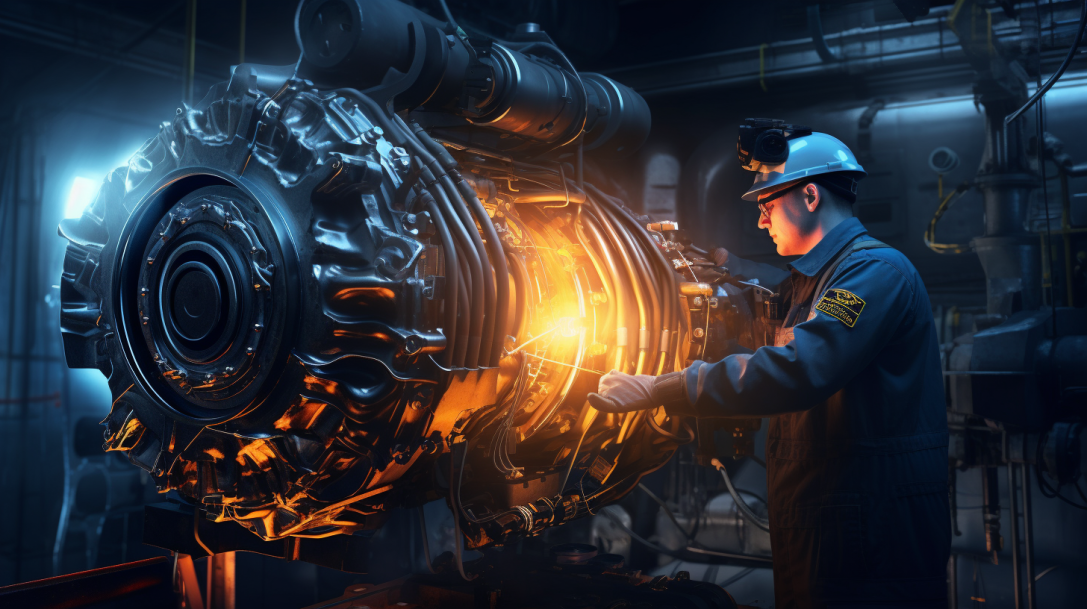Websites are like cars; they need regular maintenance and optimization to keep them running at their peak performance. Unfortunately, WordPress websites are no exception. If your WordPress website is running slow and you’re struggling to find a solution, you’re not alone.
This article will explore the common causes of slow WordPress websites and provide solutions to help you get back on the fast track.
We’ll cover everything from non-optimized images to code optimization and even expert assistance. With these tips, you can get your website up and running quickly and safely.
Non-Optimized Images
Non-optimized images can slow down your WordPress website, so be sure to upload optimized images and use lazy loading. Implementing lazy loading can help improve page load speed, while image compression techniques can help reduce the file size for images.
This can help improve page speed, which in turn can improve the experience for website visitors.
Ensuring that images are optimized and that lazy loading is enabled can help to ensure a smooth website experience.
Additionally, it is important to use secure coding practices and security protocols to ensure the safety of all website visitors. By following these steps, you can ensure that your website runs quickly and securely.
Caching Plugin
Using a caching plugin, like WP Super Cache, can help speed up your website by up to 50%, drastically improving your page loading times.
Caching plugins store copies of your website’s content so that when visitors access your website, the files are already preloaded and ready to go. This makes your website load faster and reduces the strain on your server.
| Advantages | How to Choose |
|---|---|
| Improved Speed | Evaluate the features and cost of the plugins |
| Reduced Server Load | Consider the scalability of the plugin |
| Enhanced Security | Check the compatibility of the plugin with your theme |
When choosing a caching plugin, it’s important to consider the features, cost, scalability, and compatibility of the plugin with your theme.
It’s also important to make sure that the plugin is regularly updated to ensure that your website is secure and runs smoothly. With the right caching plugin, you can improve the speed and performance of your WordPress website.
Content Delivery Network
A Content Delivery Network (CDN) can help you optimize your website’s load time globally and give you an edge over the competition. It is a system of distributed servers that deliver web content to users based on their geographic location.
CDN offers several advantages, such as improved performance, enhanced security, and better scalability. The Pros of using a CDN are increased speed, improved security, and better scalability.

However, there are also some drawbacks, including higher costs and latency issues. Before selecting a CDN provider, it is important to consider factors such as geographic coverage, pricing, scalability, and customer service.
Additionally, you should check the provider’s reputation and performance record. It is also important to keep in mind that not all CDN providers are equal in terms of features and reliability.
By selecting the right CDN provider, you can maximize the benefits of using a CDN and ensure the best performance for your WordPress website.
Back-end Processes
Too many back-end processes can be the surprise culprit for your website woes. An excessive amount of background tasks can lead to slowed server performance and cause your website to become sluggish.
To prevent this, you should optimize the back end of your WordPress website. This involves reducing the number of processes running, particularly those related to plugins and themes.
You can also optimize the back end by improving server performance and configuring settings to ensure that the website is running as efficiently as possible.
Doing this can help improve website speed and reduce the chances of your website slowing down due to excessive back-end processes.
To ensure your website is running optimally, it is important to periodically review the back end and make any necessary changes. This will help keep your website running smoothly and prevent any performance issues due to back-end processes.
GZIP Compression
Boost your website’s speed by enabling GZIP compression. GZIP is a type of file compression that reduces the size of pages sent from the server to the browser, making them load faster. Here are the advantages of using GZIP compression:
- Reduced page size and faster loading times
- Reduced server load and bandwidth
- Increased SEO rankings
- Improved user experience
Enabling GZIP compression is easy and can be done in a few steps. First, you’ll need to set up GZIP compression in your web server’s configuration file.
Next, you’ll need to verify that GZIP is enabled using an online tool. Finally, you’ll need to check the performance of your site after enabling GZIP compression and make any necessary changes.
Using GZIP compression can help keep your WordPress website running smoothly and efficiently. It can also help improve user experience, SEO rankings, and reduce server load.
Take advantage of this simple but powerful tool to ensure your website is running at its best.
HTTP Requests
Reduce the number of HTTP requests to improve the performance of your website. Excessive HTTP requests can have a significant impact on the speed of your WordPress website.
Therefore, it is important to have a good understanding of best practices for reducing HTTP requests.
To start, consider optimizing the code of your website to reduce the number of HTTP requests.
This can be done by combining CSS and JavaScript resources, simplifying the design, and limiting the number of HTTP requests to 25 or less. Additionally, use plugins or seek help from a WordPress expert to further optimize the code.
Lastly, be sure to properly configure caching and use a content delivery network to further reduce the number of HTTP requests.
By following these best practices, you can increase the performance of your WordPress website.
Code Optimization
Moving on from HTTP requests, let’s talk about how code optimization can improve the performance of your WordPress website. Code optimization is the process of making your website code more efficient and faster to execute.
It also reduces the amount of data transferred between the web server and the user’s web browser. This can lead to improved website speed.
Here is a quick overview of how code optimization can help your website:
| Benefit | Process |
|---|---|
| Improved Performance | Minify HTML, CSS, and JavaScript code |
| Lower Load Times | Consolidate and combine files |
| Reduced Resource Usage | Use lazy loading for images and videos |
By minimizing code and consolidating files, you can ensure your website runs as smoothly and efficiently as possible. Code optimization can also help reduce the amount of resources used, leading to improved performance and lower load times.
Additionally, using lazy loading for images and videos can help reduce the amount of data being transferred.
Image Optimization
Optimizing images is an important step to ensure your website runs quickly and efficiently. Make sure to use lazy loading and image compression. This decreases the size of the images, and helps your site load faster. Here are 4 tips for image optimization:
- Use the right format – JPEGs, PNGs, and GIFs are the best formats for web.
- Resize images – use tools to resize images so they are the right size for your website.
- Compress images – compress images to reduce their file size.
- Lazy load images – lazy loading delays the loading of images until they are in view.
These steps ensure your images are optimized for the web, and help your website load faster and more securely.
Design Simplification
Streamline your website design by combining CSS and Javascript resources and limiting HTTP requests to 25 or fewer. This will improve the user experience and speed up your website.
Design improvements can help ensure a safe and secure browsing experience for your visitors. Look for ways to reduce the number of HTTP requests, such as combining images, using sprites, and leveraging CSS3.
Make sure to also minify the files by removing unnecessary characters and elements. Another great way to simplify design is to use a Content Delivery Network (CDN) to serve static content from other locations around the world. By doing this, you can reduce the number of HTTP requests and make your website load faster.
Expert Assistance
If you’re unable to solve your website speed issues on your own, getting expert help from WordPress developers or Devgraphix can help reduce website load time by an average of 28%.
WordPress troubleshooting experts are experienced in identifying and addressing problems that slow down websites, from web hosting to code optimization.
They can also provide advice on performance optimization techniques to help improve page speed. Expert assistance is an important step in ensuring that your website is secure and running smoothly.
With their expertise, they can identify any security issues or vulnerabilities that may be present and address them before they become a major problem.
They can also ensure that your website is following the latest best practices for security and performance. In addition to troubleshooting, expert assistance also provides peace of mind that the website is running as it should be.
| Benefits | Risks |
|---|---|
| Troubleshooting and performance optimization | Security and data vulnerability |
| Advice on performance optimization | Expense |
| Identifying and addressing potential problems | Time consuming |
| Following best practices for security and performance | Difficult to find expertise |
Frequently Asked Questions
What is a CDN and why is it important for WordPress websites?
A CDN is a hosting solution that stores copies of your website’s content across multiple servers around the world. It helps to speed up page loading time by caching strategies, providing a secure and reliable way to access your website’s content.
With a CDN, you can protect your website from malicious attacks and provide a faster browsing experience for all your visitors.
What is the recommended maximum number of HTTP requests for a WordPress website?
You want your WordPress website to be fast and secure? Optimizing scripts and database optimization are key, so limit HTTP requests to 25 or less. Doing this will keep your site running smoothly while keeping it safe from any potential risks.
How can I optimize images without using a plugin?
You can optimize images without a plugin by compressing them to reduce their size and resizing them to fit the space they need to occupy on your website. This will help speed up your website and provide a better user experience.
What is the difference between optimizing images and optimizing code?
Wow! Optimizing images and minifying code are total game changers when it comes to website speed! Caching images, like compressing them, reduces file size and helps pages load faster. Minifying code, on the other hand, removes unnecessary characters and spaces from the code, helping it load faster. Together, they make your website much more efficient and secure!
Are there any additional measures I can take to further improve my website speed?
You can further improve your website speed by minimizing plugins, reducing redirects, and optimizing content. Additionally, be sure to regularly update your WordPress software and plugins for the best performance. Make sure to do so safely and with caution to ensure the security of your website.


















